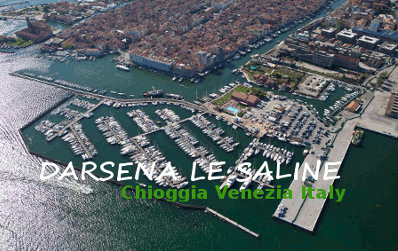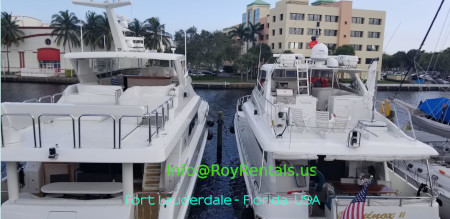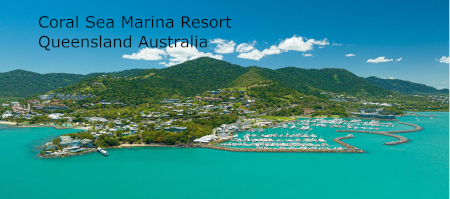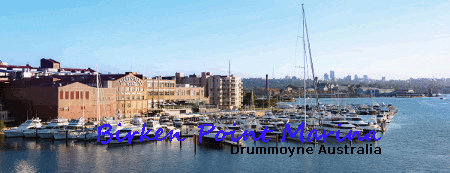Maritime and Coastguard Agency
Guidance
Seafarers: medical certification guidance
Toxic Hazards of Chemicals Including Poisoning
Contents
- Note
- Toxic hazards
- Inhaled poisons
- Swallowed poisons
- Skin contact
- Eye contact
- General notes
- Notes on specific toxic substances
Note
More detailed information on the treatment of the effects of specific chemicals is given in the International Maritime Organization's Medical First Aid Guide for use in Accidents involving Dangerous Goods (MFAG) 1994 which your ship may be carrying.
Toxic hazards
Ships carry a number of substances other than cargo which are potentially toxic. For instance, medicines are not generally poisonous but can become so if taken in a manner not prescribed , such as in an overdose . Then there are substances like cleaners, degreasers and disinfectants which can give rise to toxic hazards on their own or through misuse, e.g. emptying a bucket of bleaching solution into a lavatory bowl containing a proprietary caustic cleaner may result in the release of poisonous gas in a confined space. Notes on various specific toxic substances are given at the end of this section. Manufacturer's data sheets also contain specific medical advice.
Toxic substances can harm the body in three ways.
- They may cause local burns or irritation if they come into contact with skin or eyes.
- They may be absorbed into the body and cause internal damage or systemic poisoning.
- They may cause an allergic reaction which could be life threatening.
Toxic substances can enter the body through
- The lungs e.g. fumes or toxic gases.
- The mouth e.g. by swallowing
- The skin and eyes
The commonest route for a toxin to enter the body onboard a ship is by breathing it in. The toxin may be in the form of a vapour, gas, mist, spray, dust or fume.
Poisons are less commonly swallowed, usually by accident during routine duties, but sometimes deliberately.
The effects of toxins are often sudden and dramatic, but may be subtle, gradual and cumulative. The latter is especially true of inhaled toxins or those absorbed through the skin.
Suspect that every chemical is toxic until you know otherwise. Remember that toxins are poisonous to the rescuer as well as the patient. TAKE ALL POSSIBLE PRECAUTIONS TO PROTECT YOURSELF.
Prompt, safety conscious treatment can avoid many of the complications of poisoning.
Inhaled Poisons
(See Chapter 1 for rescue from an enclosed space.)
Many chemicals produce fumes which can irritate the lungs and cause difficulty in breathing e.g. chlorine. This will alert you to their presence.
Other gases have no odour . This group includes carbon monoxide, carbon dioxide, hydrogen and some refrigerant gases.
Gases such as carbon dioxide and carbon monoxide may also be poisonous, particularly in a confined space, because they replace oxygen in the air and therefore in the blood.
The main symptoms of exposure are :
- difficulty in breathing;
- nausea, headache, dizziness;
- confusion or even unconsciousness in severe cases.
Remember that precautions against fire and explosion may be necessary for some gases.
Treatment
- Remove the casualty at once into the fresh air. Loosen tight clothing and ensure a clear airway. Give oxygen if available.
- Start artificial respiration by the mouth to nose or mouth method if breathing is absent. The use of a Laerdal Pocket Mask (mouth to mask) is recommended for resuscitation in the case of poisoning by solvents, hydrogen cyanide (prussic acid) or petroleum products to avoid poisoning the rescuer. Use oxygen if available.
- Start chest compressions if the heart has stopped.
- In cases of hydrogen cyanide poisoning where breathing and pulse are present, break an ampoule of amyl nitrite into a clean handkerchief or cloth and hold under the patient's nose so that he inhales the vapour.
- SEEK RADIO MEDICAL ADVICE as specific treatment may be required.
- Keep the patient at rest in bed for at least 24 hours or until he has recovered.
Complications of inhaled poisons
- Severe difficulty in breathing with frothy sputum (pulmonary oedema).
- Pneumonia and bronchitis.
DO NOT GIVE MORPHINE TO A CASUALTY WHO HAS BEEN GASSED, as this will affect their ability to breathe.
Swallowed Poisons
Astringents
Many substances will cause chemical burns to the mouth, gullet and stomach if swallowed. These include bleaches and other cleaners and disinfectants, acids and alkalis and corrosives as well as petrochemicals.
The main symptoms are blistering of the mouth, lips and tongue and pain in the chest and stomach. The patients breath often smells of the astringent.
DO NOT MAKE THE CASUALTY VOMIT. If the patient is conscious and in pain then he may respond to a glass of milk. Do not give painkillers by mouth. Use suppositories or a painkilling injection if you have any.
Other substances can cause acute abdominal pain and vomiting. These include arsenic, lead, fungi, berries and partly decomposed food. Treat the patient by making them as comfortable as possible, but do not make them vomit.
Drugs and Alcohol
Drugs may cause harmful effects if taken for recreational purposes or as an overdose. An overdose may be taken accidentally or as an attempt at deliberate self harm. Common overdoses include
Sleeping Tablets
. These include Diazepam (valium), Temazepam and Nitrazepam. They cause drowsiness and unconsciousness if taken in excess. This may last for 24 hours. The breathing may slow down and become shallow. In severe cases it may stop. A similar picture may be seen with some antidepressants, such as Amitriptyline, or with alcohol.Simple painkillers such as paracetamol and aspirin are often taken as overdoses.
Paracetamol may cause abdominal pain and vomiting initially. Larger overdoses can cause severe liver damage several days later. (Liver damage is rare below 20 tablets)
Aspirin causes vomiting, abdominal pain, ringing in the ears, rapid breathing and semiconsciousness in high doses.
Treatment
Try to discover exactly what was taken (ask the patient, look for empty packets/bottles etc.) but do not waste time doing so in an emergency.
If the casualty is conscious, give one sachet (50g) of oral activated charcoal in 250 mls of fluid, if available. Encourage fluids in conscious cases of aspirin overdose. SEEK RADIO MEDICAL ADVICE.
If the patient is unconscious, then put him in the recovery (unconscious) position and
- Give artificial respiration if breathing has stopped.
- Perform chest compressions if the heart has stopped.
- DO NOT give anything by mouth.
- SEEK URGENT RADIO MEDICAL ADVICE.
Skin Contact
Toxic substances can affect the skin in two ways:
- direct contact may cause redness and irritation. In severe cases, burns to the skin can occur.
- Absorption through the intact skin producing general symptoms such as nausea, vomiting, drowsiness, weakness and rarely unconsciousness.
Treatment
- The contaminated clothing and shoes should be removed immediately.
- Wash off the chemical with copious amounts of water for at least 10 minutes. Continue for a further 10 minutes if there is any evidence of chemicals still on the skin.
- If a burn has occurred, see management of burns
Eye Contact
Many substances, in particular many chemical liquids or fumes of chemicals, will produce redness and irritation if the eyes are accidentally splashed or exposed to the fumes. Treatment should be immediate.
Wash the substance out of the eye with copious amounts of cold fresh water as quickly as possible, keeping the eyelids wide open. This must be done thoroughly for ten minutes. If there is any doubt whether the chemical has been completely removed, repeat the eye wash for a further 10 minutes. If severe pain is experienced, physical restraint to the patient may be necessary in order to be certain of effective treatment. Read about identifying and treating damage to the eye.
For pain, give two paracetamol tablets by mouth every four hours until the pain subsides. If there is very severe pain use Morphine.
General notes
If you are dealing with a suicide attempt, it is your duty to do everything you can to save his life and to guard against further attempts. The patient should not be left without an attendant.
You should save any remains of poison that you may find in a glass, cup, bottle or package. Also collect in a bowl anything that is vomited and seal in a bottle. These may help in identifying the toxic substance and deciding further treatment after the patient has been seen by a doctor or taken ashore.
Notes on specific toxic substances
For treatment see under inhaled poisons, swallowed poisons etc. above.
Disinfectant poisoning
Many types of disinfectants such as carbolic acid, cresol and bleaching solutions are toxic.
Carbolic acid (phenol) and cresols cause a severe rash on contact with the skin in dilute solutions. Strong concentrated solutions will result in painless white burns of the skin. If they are swallowed, burns of the mouth will occur, and the casualty may have severe vomiting, followed by collapse and unconsciousness. Convulsions can occur (see Epileptic fits).
Bleaching solutions (e.g. lavatory cleaners, etc.) are usually solutions of sodium hypochlorite in water. These cause irritation of the skin and are poisonous if swallowed. The patient may complain of burning in the mouth and stomach and feel generally unwell.
On contact with acids, these substances release fumes which are irritating to the lungs causing a cough, a feeling of breathlessness and burning in the mouth. However, these substances are not severely toxic and the symptoms usually subside rapidly.
Solvents, petroleum products and fuel oils
These substances usually cause symptoms after the fumes have been accidentally inhaled. The symptoms are drowsiness, dizziness, nausea and occasionally vomiting. If severe exposure occurs, the patient may become unconscious. If they are swallowed, they usually produce the same symptoms, but nausea and vomiting are worse.
Cyanide
Hydrogen cyanide (prussic acid) gas is used in fumigating ships. Both the solid cyanide and the gas are extremely poisonous, and symptoms and signs may develop very rapidly. They are corrosive either in contact with the skin or after being swallowed, causing external burns, burns in the mouth and intense pain in the abdomen. There will be shortness of breath, anxiety and rapid loss of consciousness. Convulsions can occur. Death may result within a few minutes.
Carbon dioxide (carbonic acid gas)
Suffocation by this odourless gas may occur while dealing with a fire in a hold. The gas is also produced if grain in the hold ferments, and it may be generated by refrigerated cargoes of certain foods; it is also used as a refrigerant. The gas is heavier than air and collects in the lower parts of holds and compartments. When exposed to it, a man has giddiness, difficulty in breathing and headache. Later he may fall down and lose consciousness.
Carbon monoxide
This odourless gas is also produced in hold fires, as a product of an explosion, in the waste gases of petrol and oil driven engines, and when refrigerated meat cargoes decompose. It is lighter than air and very poisonous. In heavy concentration it is inflammable. A patient suffering from the effects of this gas feels giddy, often with muscular weakness. Difficulty in breathing rapidly develops and unconsciousness may come on quickly. In severe cases the lips may be bright red, and the skin of the face and body has a pink colour. Hyperbaric oxygen therapy may be helpful – SEEK ADVICE – consider urgent evacuation.
Refrigerant gases
Ammonia vapour. Breathing ammonia vapour will cause intense irritation, varying from a catching of the breath with smarting and watering of the eyes in low concentrations, up to intense irritation and corrosion of the whole air passages, gasping for breath, collapse and death in the case of highly concentrated vapour.
Carbon dioxide is also present in addition to ammonia. If a person becomes faint or loses consciousness in a refrigerating plant where there is no evidence of escaping ammonia, he is probably suffering from the effects of this gas.
Methyl chloride is a colourless gas, smelling like ether. It may cause drowsiness, mental confusion, coma, nausea, vomiting, convulsions and death. It is also dangerous in low concentration owing to its explosive nature. On no account, should any naked light be exposed in the presence of the vapour; electric motors should be stopped to avoid risk of sparking. A heavy duty electric torch, switched on before approaching the escape, is the only safe light to use.
Trichlorethylene – usually called trilene or 'trike' – is a volatile anaesthetic gas which causes drowsiness, mental confusion, nausea, vomiting and coma. It can also result in death. It is used medically as an anaesthetic because it acts quickly. In the impure form it is used as a dry cleaning agent. Some people are addicted to 'sniffing' it. Exposure may cause palpitations, especially on excitation. Those exposed to it should be kept in a calm environment for at least 6 hours.
Freon is an odourless and harmless gas except in a concentration high enough to deprive a man of sufficient oxygen. The signs of oxygen deficiency are mental confusion, faintness, staggering gait, collapse and unconsciousness.
Poisonous gases from refrigerated cargoes
Certain refrigerated cargoes including fruit, vegetables and cheese, generate carbon dioxide during normal storage. With any failure of refrigerating plant, food cargoes (especially meat) may generate poisonous and inflammable gases. This can be particularly dangerous if the cargo space is flooded. Carbon monoxide, ammonia, hydrogen sulphide and hydrogen may be generated in addition to carbon dioxide. In any great concentration these gases are extremely poisonous and some are explosive. All precautions against fire and explosion must be taken in addition to those against suffocation and poisoning
 Where Captains meet Dock Owners
Where Captains meet Dock Owners









